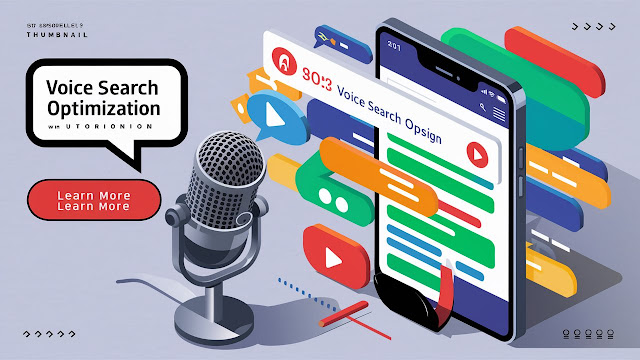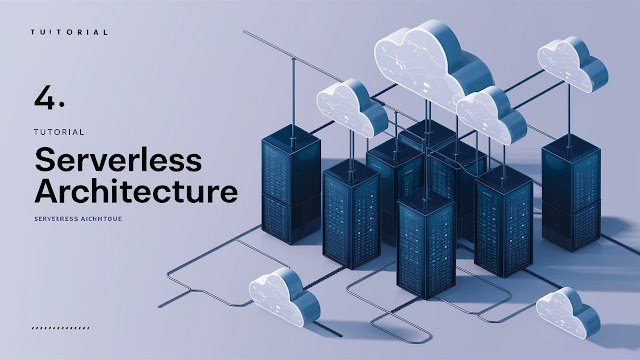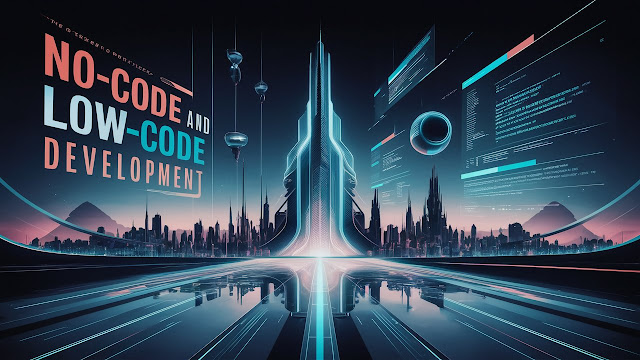Web development is a dynamic field, continually evolving to meet new technological advancements and user demands. As we step into 2024, several trends are set to shape the future of web development, promising to revolutionize the way websites are built, experienced, and maintained. This blog post delves deep into these trends, offering insights into the innovations that will define web development this year and beyond.
1. Progressive Web Apps (PWAs)
Progressive Web Apps (PWAs) are rapidly gaining popularity, combining the best of web and mobile apps to offer users a seamless, app-like experience directly in their browsers. They are fast, reliable, and engaging, providing functionalities such as offline access, push notifications, and quick loading times.
Benefits of PWAs
- Improved Performance: PWAs load quickly and efficiently, even in areas with poor network connectivity.
- Enhanced User Experience: With app-like features and smooth interactions, PWAs keep users engaged.
- Cost-Effective Development: Developing a PWA is often more affordable than creating separate web and mobile applications.
- Increased Reach: PWAs work across all devices and platforms, ensuring a broader audience reach.
Key PWA Examples
- Twitter Lite: A PWA version of Twitter that offers a fast and reliable experience.
- Pinterest: Their PWA has led to a significant increase in user engagement and conversions.
- Uber: The Uber PWA is optimized for quick rides even on low-speed networks.
2. Artificial Intelligence and Machine Learning
Artificial Intelligence (AI) and Machine Learning (ML) are integral to modern web development. In 2024, these technologies will continue to transform how websites are created and personalized.
AI and ML Applications in Web Development
- Personalized User Experiences: AI algorithms analyze user behavior to tailor content and recommendations.
- Enhanced Security: ML models can detect and mitigate security threats in real-time.
- Automated Customer Support: Chatbots and virtual assistants powered by AI provide instant customer support.
- Content Creation: AI tools assist in generating content, improving SEO, and streamlining workflows.
Notable AI Tools for Web Development
- TensorFlow.js: A library for training and deploying ML models directly in the browser.
- Chatbot Platforms: Tools like Dialogflow and Microsoft Bot Framework enable the creation of sophisticated chatbots.
3. Voice Search Optimization
With the rise of smart speakers and virtual assistants like Alexa, Siri, and Google Assistant, voice search is becoming increasingly prevalent. By 2024, optimizing for voice search will be crucial for maintaining a competitive edge in web development.
Strategies for Voice Search Optimization
- Conversational Content: Create content that mirrors natural language and conversational queries.
- Long-Tail Keywords: Focus on longer, more specific keyword phrases that people are likely to use in voice searches.
- Structured Data: Implement schema markup to help search engines understand and index content effectively.
- Mobile Optimization: Ensure that websites are mobile-friendly, as most voice searches are conducted on mobile devices.
4. Serverless Architecture
Serverless architecture is transforming how developers build and deploy web applications. By abstracting server management, developers can focus on writing code and delivering features faster.
Advantages of Serverless Architecture
- Scalability: Automatically scales with the demand, handling variable workloads effortlessly.
- Cost-Efficiency: Pay only for the actual compute time used, reducing operational costs.
- Simplified Backend Management: Eliminates the need for server maintenance and infrastructure management.
Popular Serverless Providers
- AWS Lambda: Offers a robust serverless platform with extensive integrations.
- Google Cloud Functions: Provides a scalable serverless environment for building and connecting cloud services.
- Azure Functions: Enables building serverless applications with seamless Azure ecosystem integration.
5. Single Page Applications (SPAs)
Single Page Applications (SPAs) offer a dynamic and fluid user experience by loading content dynamically without refreshing the entire page. This approach results in faster, more responsive web applications.
Benefits of SPAs
- Enhanced Speed: Faster load times and smoother interactions as only necessary content is updated.
- Improved User Experience: Seamless navigation and real-time updates without page reloads.
- Reduced Server Load: Minimizes server requests by handling most interactions on the client side.
Popular SPA Frameworks
- React: Developed by Facebook, React is a popular library for building SPAs.
- Angular: A comprehensive framework by Google for creating dynamic SPAs.
- Vue.js: Known for its simplicity and flexibility, Vue.js is gaining popularity for SPAs.
6. WebAssembly
WebAssembly (Wasm) is a binary instruction format that enables high-performance execution of code on web browsers. It allows developers to run code written in multiple languages, not just JavaScript, providing near-native performance for web applications.
WebAssembly Advantages
- Performance: Delivers near-native speed for complex applications.
- Language Flexibility: Supports languages like C, C++, Rust, and more.
- Improved Security: Provides a secure execution environment within the browser.
Use Cases of WebAssembly
- Gaming: High-performance games running in the browser.
- Productivity Applications: Complex software like graphic editors and CAD tools.
- Scientific Computing: Intensive computations and simulations directly in the browser.
7. Cybersecurity
With the increasing number of cyber threats, cybersecurity remains a top priority for web developers. In 2024, adopting robust security measures is essential to protect user data and maintain trust.
Key Cybersecurity Practices
- SSL/TLS Encryption: Ensure all data transmitted between the user and server is encrypted.
- Regular Security Audits: Conduct frequent security assessments and vulnerability scans.
- Secure Authentication: Implement multi-factor authentication (MFA) to enhance login security.
- Data Privacy Compliance: Adhere to regulations such as GDPR and CCPA to protect user privacy.
Emerging Cybersecurity Technologies
- AI-Driven Security: Using AI to detect and respond to threats in real-time.
- Blockchain: Enhancing data integrity and security through decentralized ledgers.
- Zero Trust Architecture: A security model that requires verification for every access request, regardless of the source.
8. Motion UI
Motion UI involves the use of animations and transitions to create engaging and interactive user interfaces. In 2024, leveraging motion UI will be essential for enhancing user experience and capturing attention.
Benefits of Motion UI
- Improved User Engagement: Animations can make interactions more enjoyable and intuitive.
- Enhanced Feedback: Provides visual feedback to user actions, improving usability.
- Brand Identity: Animations can reflect a brand’s personality and style.
Tools for Implementing Motion UI
- CSS Animations: Utilize CSS for simple animations and transitions.
- JavaScript Libraries: Libraries like GSAP (GreenSock Animation Platform) for more complex animations.
- Lottie: A tool for integrating high-quality animations created in After Effects into web applications.
9. Responsive Design
Responsive design remains crucial in 2024, as users access websites from a variety of devices with different screen sizes. Ensuring a consistent and optimized experience across all devices is essential for user satisfaction and SEO.
Best Practices for Responsive Design
- Flexible Layouts: Use flexible grids and layouts that adapt to different screen sizes.
- Media Queries: Implement CSS media queries to apply styles based on device characteristics.
- Mobile-First Approach: Design for mobile devices first, then scale up for larger screens.
- Adaptive Images: Serve appropriately sized images based on the user's device and screen resolution.
10. Augmented Reality (AR) and Virtual Reality (VR)
AR and VR technologies are no longer limited to gaming; they are becoming integral to web development. In 2024, integrating AR and VR into web applications can offer immersive and interactive experiences.
Applications of AR and VR in Web Development
- E-Commerce: Virtual try-ons and 3D product visualizations.
- Real Estate: Virtual tours of properties.
- Education: Interactive learning experiences and virtual classrooms.
Tools for AR and VR Development
- AR.js: A lightweight library for AR on the web.
- Three.js: A JavaScript library for creating 3D graphics in the browser.
- A-Frame: A framework for building VR experiences with HTML.
11. Blockchain Technology
Blockchain technology is set to revolutionize web development by offering enhanced security, transparency, and decentralization. In 2024, blockchain applications will extend beyond cryptocurrencies to various web-based solutions.
Blockchain Use Cases in Web Development
- Decentralized Applications (DApps): Applications that run on a blockchain network.
- Smart Contracts: Self-executing contracts with the terms directly written into code.
- Digital Identity Verification: Secure and decentralized identity management systems.
Popular Blockchain Platforms
- Ethereum: A leading platform for building decentralized applications and smart contracts.
- Hyperledger: An open-source collaborative effort to advance cross-industry blockchain technologies.
- Polkadot: Enables different blockchains to transfer messages and value in a trust-free fashion.
12. No-Code and Low-Code Development
No-code and low-code platforms are democratizing web development by allowing non-developers to build web applications. These platforms provide visual interfaces and pre-built components, reducing the need for extensive coding.
Benefits of No-Code and Low-Code Platforms
- Accelerated Development: Faster application development and deployment.
- Cost Savings: Reduces the need for hiring specialized developers.
- Accessibility: Empowers non-technical users to create and manage applications.
Popular No-Code and Low-Code Platforms
- Bubble: A no-code platform for building web applications.
- OutSystems: A low-code platform for enterprise-grade applications.
- Webflow: Combines web design and development in a visual interface.
13. Static Site Generators (SSGs)
Static Site Generators (SSGs) generate static HTML pages that are fast, secure, and easy to deploy. In 2024, SSGs will continue to gain popularity for creating performant and scalable websites.
Advantages of SSGs
- Performance: Faster loading times as pages are pre-rendered.
- Security: Reduced attack surface as there is no server-side processing.
- Scalability: Easier to scale as static files can be served via CDN.
Popular Static Site Generators
- Gatsby: A React-based framework for creating static sites.
- Jekyll: A simple, blog-aware static site generator.
- Hugo: Known for its speed and flexibility in generating static sites.
14. API-First Development
API-First Development emphasizes building robust APIs before developing the frontend. This approach ensures that the backend and frontend can evolve independently, promoting scalability and flexibility.
Benefits of API-First Development
- Separation of Concerns: Decouples the frontend from the backend.
- Reusability: APIs can be reused across different projects and platforms.
- Consistency: Ensures consistent data handling and interactions.
Tools for API-First Development
- Swagger: A suite of tools for API design, documentation, and testing.
- Postman: An API collaboration platform for testing and managing APIs.
- GraphQL: A query language for APIs that allows clients to request exactly the data they need.
15. Cloud-Native Development
Cloud-native development focuses on building and running applications that exploit the advantages of cloud computing. In 2024, leveraging cloud-native technologies will be essential for creating scalable and resilient web applications.
Cloud-Native Principles
- Microservices: Breaking applications into small, independent services.
- Containers: Using containerization technologies like Docker for consistent environments.
- Orchestration: Managing containerized applications with tools like Kubernetes.
Benefits of Cloud-Native Development
- Scalability: Easily scale applications to handle increased demand.
- Resilience: Enhanced fault tolerance and disaster recovery.
- Agility: Faster deployment and iteration cycles.
Conclusion
As we move further into 2024, these trends will play a pivotal role in shaping the future of web development. From Progressive Web Apps and AI integration to the adoption of serverless architecture and cloud-native development, staying abreast of these innovations will be crucial for developers aiming to create modern, efficient, and user-friendly web applications.
Must-Read Books for Web Developers in 2024: Enhance Your Skills and Stay Ahead of the Curve
1. "JavaScript: The Good Parts" by Douglas Crockford
Why Read It: This seminal book is a must-read for understanding the core principles and best practices of JavaScript, one of the most crucial languages in web development. Douglas Crockford’s expert guidance helps developers write cleaner, more efficient code, crucial for the increasingly complex web applications of today.
2. "Learning Web Design: A Beginner's Guide to HTML, CSS, JavaScript, and Web Graphics" by Jennifer Robbins
Why Read It: Ideal for both beginners and seasoned developers, this comprehensive guide covers the basics and beyond of web design and development. Jennifer Robbins provides practical exercises and real-world examples, making it an invaluable resource for mastering modern web technologies and responsive design.
3. "The Pragmatic Programmer: Your Journey to Mastery" by Andrew Hunt and David Thomas
Why Read It: Though not limited to web development, this classic book offers timeless wisdom on a wide range of programming topics. Hunt and Thomas’s practical advice on coding, debugging, and maintaining software is essential for any developer aiming to improve their efficiency and adaptability in a fast-paced industry.
FAQs About Trends Shaping the Future of Web Development in 2024
1. What are Progressive Web Apps (PWAs) and why are they important in 2024?
Answer: Progressive Web Apps (PWAs) are web applications that provide a seamless, app-like experience directly in browsers. They are important because they offer fast, reliable performance, offline capabilities, and enhanced user engagement, making them a key trend in 2024.
2. How is Artificial Intelligence (AI) transforming web development?
Answer: AI is transforming web development by enabling personalized user experiences, enhancing security through real-time threat detection, automating customer support with chatbots, and assisting in content creation and SEO optimization.
3. Why should developers focus on voice search optimization in 2024?
Answer: Voice search is becoming increasingly prevalent with the rise of smart speakers and virtual assistants. Optimizing for voice search ensures that websites remain accessible and relevant, catering to the growing number of users who prefer voice interactions.
4. What benefits does serverless architecture offer to web developers?
Answer: Serverless architecture offers benefits such as scalability, cost-efficiency, and simplified backend management. Developers can focus on writing code and delivering features without worrying about server maintenance and infrastructure management.
5. What role does cybersecurity play in web development trends for 2024?
Answer: Cybersecurity is crucial for protecting user data and maintaining trust. With increasing cyber threats, adopting robust security measures like SSL/TLS encryption, regular security audits, and secure authentication is essential for modern web development.
Thank you:
for taking the time to read about these exciting trends. Your engagement and curiosity are what drive the continuous evolution and improvement of web technologies. Stay tuned for more updates and insights into the ever-dynamic world of web development!

















